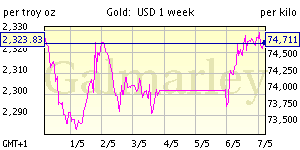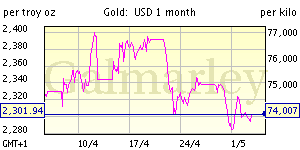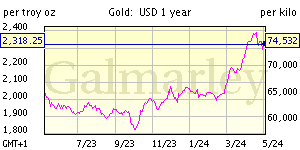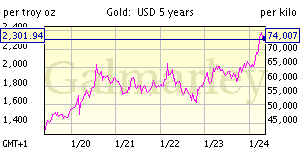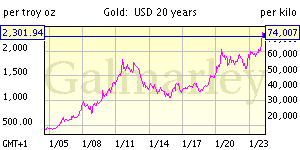The Lesson from Japan
Premiums for gold and silver there have risen in response to the disasters, which isn’t surprising. Japanese investors scrambled for physical metals after the earthquake, immediately pushing premiums to three-year highs. And it wasn’t just buyers in the earthquake, tsunami and nuclear-plant zones; those in less affected parts of the nation have been rushing to buy precious metals, too. The end result is that available supply has been glutted.
The reactionary buying in Japan could not just support metals prices, but push them higher. This is certainly due to the draining of supply, but also because it’s complicating delivery and exacerbating fabrication problems. The country is a net gold exporter, but there may not be many planes and boats loaded with bullion leaving ports anytime soon, given that many modes of transportation are down and the distribution of more urgent food and other supplies is complicated.
This could dry up gold supplies elsewhere in Asia, as Japan exported 2.7 million ounces last year. While this is only roughly 2.3% of global supply, these ounces are concentrated in Asia, a region that has already seen many countries’ citizens hoarding precious metals. If supply becomes scant across Asia, it’s easy to see how this could light a fire under prices.
As Mark Pervan, head of commodities research at ANZ, said, "This is a buy-on-the-dip opportunity. Investors, not just Japan but globally, have been looking for a trigger to get back into the market. The rise in premiums in Japan could be it."
The lesson is this: When disaster strikes, it’s almost certainly too late to buy. Not only will you pay a higher premium, you may have difficulty getting your hands on bullion. You have to purchase your insurance before adversity hits.
And the warning is this: We saw how supply dried up and premiums skyrocketed during the market meltdown of 2008. Europe saw the same result when Greece imploded. We’re now seeing it happen in Asia due to Japan’s woes. We keep seeing this picture repeat. While no one wants to bet on calamity, is the U.S. really immune from trouble? Are you?
Premiums for gold and silver there have risen in response to the disasters, which isn’t surprising. Japanese investors scrambled for physical metals after the earthquake, immediately pushing premiums to three-year highs. And it wasn’t just buyers in the earthquake, tsunami and nuclear-plant zones; those in less affected parts of the nation have been rushing to buy precious metals, too. The end result is that available supply has been glutted.
The reactionary buying in Japan could not just support metals prices, but push them higher. This is certainly due to the draining of supply, but also because it’s complicating delivery and exacerbating fabrication problems. The country is a net gold exporter, but there may not be many planes and boats loaded with bullion leaving ports anytime soon, given that many modes of transportation are down and the distribution of more urgent food and other supplies is complicated.
This could dry up gold supplies elsewhere in Asia, as Japan exported 2.7 million ounces last year. While this is only roughly 2.3% of global supply, these ounces are concentrated in Asia, a region that has already seen many countries’ citizens hoarding precious metals. If supply becomes scant across Asia, it’s easy to see how this could light a fire under prices.
As Mark Pervan, head of commodities research at ANZ, said, "This is a buy-on-the-dip opportunity. Investors, not just Japan but globally, have been looking for a trigger to get back into the market. The rise in premiums in Japan could be it."
The lesson is this: When disaster strikes, it’s almost certainly too late to buy. Not only will you pay a higher premium, you may have difficulty getting your hands on bullion. You have to purchase your insurance before adversity hits.
And the warning is this: We saw how supply dried up and premiums skyrocketed during the market meltdown of 2008. Europe saw the same result when Greece imploded. We’re now seeing it happen in Asia due to Japan’s woes. We keep seeing this picture repeat. While no one wants to bet on calamity, is the U.S. really immune from trouble? Are you?
![[Most Recent Quotes from www.kitco.com]](http://www.kitconet.com/images/quotes_7a.gif)

